Today’s Current Affairs: 25th July 2025 for UPSC IAS exams, State PSC exams, SSC CGL, State SSC, RRB, Railways, Banking Exam & IBPS, etc
Table of Contents
PM Surya Ghar Muft Bijli Yojana: In News

As of 14 July, the Pradhan Mantri Surya Ghar Muft Bijli Yojana had benefitted 15.45 lakh households, the Union Ministry of New and Renewable Energy (MNRE) has informed the Parliament recently.
- PM Surya Ghar Muft Bijli Yojana was launched on February 15, 2024, and aims to provide free electricity to households in India.
- Under the scheme, households will be provided with a subsidy to install solar panels on their roofs.
- The scheme provides for a subsidy of 60% of the solar unit cost for systems up to 2 kW capacity and 40 percent of additional system cost for systems between 2 to 3 kW capacity.
- The subsidy has been capped at 3 kW capacity.
- At current benchmark prices, this will mean Rs 30,000 subsidy for 1 kW system, Rs 60,000 for 2 kW systems and Rs 78,000 for 3 kW systems or higher.
- For special states, an additional 10% Subsidy will be applicable per kW.
- It would help one crore families get up to 300 units of free electricity per month with savings of up to Rs 18,000 annually.
- It is estimated that the scheme will save the government Rs. 75,000 crore per year in electricity costs.
- The scheme has an outlay of Rs 75,021 crore and is to be implemented till FY 2026-27.
- Eligibility:
- The household must be an Indian citizen.
- The household must own a house with a roof that is suitable for installing solar panels.
- The household must have a valid electricity connection.
- The household must not have availed any other subsidy for solar panels.
- The scheme will be implemented by a National programme Implementation Agency (NPIA) at the National level and by the State Implementation Agencies (SIAs) at the state level.
- Under the scheme, DISCOMs are designated as State Implementation Agencies (SIAs) responsible for facilitating various measures, including net meter availability, timely inspection, and commissioning of installations.
- DISCOMs will receive incentives based on their achievement in the installation of additional grid-connected rooftop solar capacity beyond a baseline level.
- The total financial outlay for the ‘Incentives to DISCOMs’ component is Rs 4,950 crore.
- One of the components of the scheme is the development of Model Solar Village in each district of the country.
- An amount of Rs 800 crore has been allocated for this component with a provision of central financial assistance of Rs one crore per model village.
- Under the component Incentives to Local Bodies, the scheme has provision of providing an incentive at Rs 1,000 per rooftop solar installation in the respective jurisdiction of the Urban Local Bodies (ULBs) and Panchayat Raj Institutions (PRIs) at the Gram Panchayat level.
Long-Billed Bush Warbler:
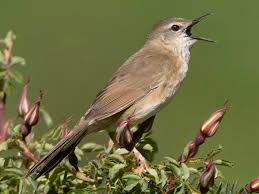
A team of birders recently recorded the first confirmed Indian sighting of the elusive Long-billed Bush Warbler in 46 years, spotting the Near Threatened species in Ladakh’s Suru Valley.
- It is a medium-sized bush warbler (songbird) with a relatively long tail and long bill.
- Scientific Name: Locustella major
- It has a limited distribution in the mountains of Central Asia.
- It’s found in parts of China, India, Pakistan, and Tajikistan.
- It inhabits grassy slopes dotted with bushes, weeds, and grass; upland terraced cultivation; and edges of alpine meadows and forest clearings, at 2400-3600 m.
- Plumage is generally brownish-olive with fine streaking on the back.
- The underparts are paler, usually whitish or buff.
- Size: Around 15–17 cm in length.
- Like other bush warblers, typically very skulking and furtive, preferring to run instead of fly when threatened.
- Emerges onto small bushes to sing, producing a dull clicking that would underwhelm a grasshopper.
- Conservation Status: IUCN Red List: Near Threatened.
Preah Vihear Temple:
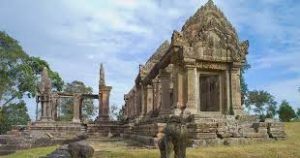
Fighter jets, landmines, and diplomatic expulsions marked the sharpest escalation in tensions between Thailand and Cambodia in years over a dispute that stretches back over a century, and at the centre of it lies the 11th-century Preah Vihear Hindu temple.
- It is a Hindu temple located in the Preah Vihear Province, in the northern part of Cambodia.
- It is located atop a cliff on the Cambodia–Thailand border in the Dangrek Mountain range .
- It is dedicated to Lord Shiva.
- It was built primarily during the period of the Khmer Empire, in the eleventh and twelfth centuries.
- It was built firstly by King Suryavarman I (1002-50) and then expanded upon by Suryavarman II (1113-50).
- It is a UNESCO World Heritage Site.
- It is an outstanding masterpiece of Khmer architecture.
- The temple is composed of a series of sanctuaries linked by a system of pavements and staircases over an 800-metre-long axis.
- It features more than five successive gopuras.
- Unlike other structures of this kind, the gopuras here are connected by a long path and topped with multi-tiered platforms.
- Each gopura has a small staircase. Some of these gopuras have stone roofs, while others have wooden roofs, many of which are in ruins.
- Preah Vihear Temple is the subject of a long-running territorial dispute between Thailand and Cambodia.
- In 1962, the International Court of Justice ruled that it belonged to Cambodia.
- However, Thailand has maintained that the land surrounding the temple — especially a 4.6 sq.km. patch —remains unresolved.
- Tensions escalated again in 2008 after Cambodia succeeded in registering Preah Vihear as a UNESCO World Heritage Site.
- Thai nationalists objected, and skirmishes broke out, culminating in a deadly exchange in 2011 that killed at least 15 people.
- The ICJ reaffirmed its ruling in 2013, this time declaring that the surrounding land was also Cambodian — a decision that still stings in Bangkok.
AI for India 2.0 Programme:

The Minister of State (Independent Charge), Ministry of Skill Development and Entrepreneurship (MSDE), informed the Rajya Sabha about AI for India 2.0 Programme.
- It was launched in 2023 on the occasion of the ‘World Youth Skills’ Day.
- The objectives and components of the Programme are
- Free online training in Artificial Intelligence and Machine Learning.
- Special focus on vernacular accessibility—content available in nine Indian languages (e.g., Hindi, Telugu, Kannada).
- It is aimed at college students, fresh graduates, and early-career professionals, especially from rural and non-english-speaking backgrounds.
- This programme has been a tech platform, enabling tech learning in 9 vernacular languages empowering the youth by providing them with the access to expert-curated Python courses.
- The Programme had nationally accredited recognition.
- It is a joint initiative by GUVI (Grab Ur Vernacular Imprint), IIT Madras- IIM Ahmedabad incubated ed-tech company and Skill India, which targets the education of students in vernacular languages.
- This online program reportedly holds the accreditation of NCVET and IIT Madras, which aim to equip young individuals with cutting-edge skills.
National Crisis Management Committee:

The Central Government constituted the National Crisis Management Committee (NCMC), for dealing with any situation of major disaster having national ramifications.
- National Crisis Management Committee is established under the Disaster Management Act, 2005 (53 of 2005) by the Central G
- The committee shall be the apex body for dealing with the situation arising out of a major disaster.
- Composition of National Crisis Management Committee:
- Chairperson: It is headed by the Cabinet S
- Members will constitute of the Union Home Secretary, Defence Secretary, Secretary (co-ordination), Cabinet Secretariat and member and head of department, the National Disaster Management Authority,
- The chairperson of the NCMC may co-opt any expert or any officer either from the central government or the state government or any organisation, depending on the nature of the crisis, to assist the committee in performing its functions during a threatening disaster situation, an emerging disaster situation or a disaster.
- It shall evaluate preparedness to respond to any threatening disaster situation, emerging disaster situation or disaster and give directions, where necessary, for enhancing such preparedness.
- It shall coordinate and monitor actions of the concerned ministries or departments of the government of India, state governments, national authority, state authorities, governmental and non-governmental organisations in relation to disaster response.
- It shall give such directions as may be necessary for the proper coordination and monitoring of disaster response in the country.
Henley Passport Index:

India has climbed eight places on Henley Passport Index 2025 to 77th rank from 85 last year.
- Henley Passport Index is a popular ranking of global passports that measures passport strength by the number of destinations that holders can visit without a prior visa.
- The index ranks countries based on statistics provided by the International Air Transport Association (IATA).
- It started in 2006 as the Henley & Partners Visa Restrictions Index (HVRI).
- The index includes 199 different passports and 227 different travel destinations.
Highlights of Henley Passport Index 2025
- Singapore’s passport remains the most powerful in the world, granting visa-free access to 193 of 227 locations.
- Asian countries dominate the top spots, with Japan and South Korea securing second place, allowing travel to 190 destinations without a visa.
- Seven EU passports share third place — Denmark, Finland, France, Germany, Ireland, Italy, and Spain, all with access to 189 destinations.
- In contrast, traditionally powerful passports like U.S. and U.K. have seen a dip in influence.
- The U.S. passport has slipped to tenth place from ninth last year, with access 182 destinations, while the U.K. has fallen from fifth to sixth position accessing 186 destinations.
India–UK Vision 2035:

The Indian Prime Minister’s visit to London marked the unveiling of the India–UK Vision 2035 roadmap and the formalisation of the Comprehensive Economic and Trade Agreement (CETA), a Free Trade Agreement (FTA), with the goal of pushing bilateral trade beyond USD 100 billion by 2030.
- The newly signed CETA is central to the Vision 2035, aiming to increase bilateral trade and create jobs.
- The Joint Economic and Trade Committee (JETCO) will oversee its implementation, with plans to advance a Bilateral Investment Treaty (BIT).
- A major focus is the Technology Security Initiative, targeting advancements in next-generation technologies such as Artificial Intelligence (AI), quantum computing, telecom, and critical minerals.
- The two countries have agreed on a 10-year defence industrial roadmap, focusing on joint research and manufacturing in areas like jet engine technology, maritime security, and directed energy weapons.
- The UK will also rely on India for logistics in the Indian Ocean Region and work with India under the Indo-Pacific Oceans’ Initiative (IPOI) to set up a Regional Maritime Security Centre of Excellence (RMSCE) to tackle non-traditional maritime security threats.
- India and the UK will work together to mobilize green finance, collaborate on offshore wind and nuclear technologies, and build joint supply chains in green goods.
- Platforms like the International Solar Alliance and Coalition for Disaster Resilient Infrastructure will facilitate these efforts.
- The UK will encourage the establishment of university campuses in India, and both countries will focus on Mutual Recognition of Qualifications and climate-linked job creation through a Green Skills Partnership.
- Reinforces commitment to multilateralism and advocating for reforms in institutions like the United Nations, WTO, IMF, and the World Bank.
One Stop Centres Scheme:
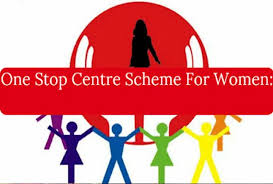
The Delhi High Court issued multiple directions to the Delhi government concerning the poor condition of One Stop Centres (OSCs) set up under the One Stop Centre scheme to aid women affected by violence
- One Stop Centres Scheme launched by the Ministry of Women and Child Development (MWCD), OSCs aim to provide integrated support and assistance to women affected by violence in private and public spaces, including family, community, and workplace settings.
- Also known as Sakhi Centres, they form a key component of the Sambal vertical under Mission Shakti.
- It is 100% centrally funded through the Nirbhaya Fund and implemented by State/UT governments.
- They ensure immediate and long-term access to medical, legal, psychological, and counselling services for women facing physical, sexual, emotional, psychological, or economic abuse.
- It supports all women and girls, including those below 18 years, affected by any form of violence, regardless of caste, class, religion, region, marital status, education, sexual orientation, or culture.
- It is linked to the Juvenile Justice Act, 2015 and POCSO Act, 2012 to ensure protection for minor girls.
DHRUVA Policy:

The Department of Posts has introduced DHRUVA (Digital Hub for Reference and Unique Virtual Address) Policy, a geo-coded digital address system to revolutionize governance, logistics, and service delivery in India.
- DHRUVA Policy is a pioneering Digital Public Infrastructure (DPI) initiative designed to revolutionize the structure and management of addresses across India by assigning a unique digital address to every home.
- Based on Address-as-a-Service (AaaS), it enables secure, consent-based sharing of geo-coded address information through a seamless digital platform.
- It has been developed entirely in India, fostering indigenous technology and domestic innovation.
- It can reduce delivery costs in e-commerce, postal, and logistics, and enhances resource planning in telecom, broadband, and urban governance.
- Layers: It consists of 2 key layers:
- Digital Postal Index Number (DIGIPIN): DIGIPIN is a 10-digit alphanumeric code that represents exact geographic coordinates (latitude-longitude), created using 4×4 meter grids across India. It gives every location a unique identity using geospatial data.
- Digital Address Layer: A user-friendly, consent-based system built on DIGIPIN, letting users create custom labels and descriptive addresses (e.g., house numbers, street names etc) linked to their DIGIPIN.
Interstellar Comet 3I/ATLAS:
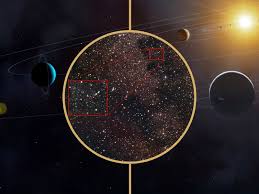
The NASA-funded ATLAS telescope in Chile reported the discovery of interstellar comet 3I/ATLAS, originating from the constellation Sagittarius.
- 3I/ATLAS Comet is the third confirmed interstellar object (denoted by 3I) after 1I/ʻOumuamua(2017) and 2I/Borisov (2019).
- It travels at a speed of 57–68 km/s in a hyperbolic orbit, confirming its interstellar origin.
- Likely originated from the Milky Way’s thick disk, a region of ancient stars, making it distinct from previous interstellar objects.
- Simulations using the Ōtautahi–Oxford model suggest a 70% probability that it predates the Solar System by over 3 billion years, making it possibly the oldest comet ever observed, at over 7 billion years old.
- It Shows active coma and likely tail, with spectral evidence of water ice and complex organics.
- Its estimated nucleus size is 10–30 km, larger than earlier interstellar comets.
- 3I/ATLAS is the first ISO traced to the Milky Way’s thick disk, unlike earlier ISOs from the thin disk.
- It offers rare insight into primordial galactic material, aiding study of planet formation, organic chemistry, and possibly panspermia.
UAV-Launched Precision Guided Missile (ULPGM)-V3:
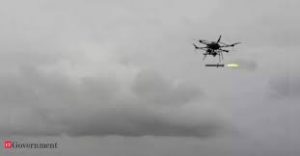
India successfully conducted flight trials of the UAV-Launched Precision Guided Missile (ULPGM)-V3 at the NOAR test range, Kurnool.
- The missile marks a significant milestone in India’s indigenous drone warfare capabilities.
- A UAV-Launched air-to-surface precision guided missile, designed for engaging static and moving targets with minimal collateral damage.
- Developed by: DRDO, in collaboration with Bharat Dynamics Limited (BDL), Adani, and multiple MSMEs and start-ups under the Make in India initiative.
- Objective is to enhance India’s autonomous strike capability, allowing drones to deliver pinpoint attacks without risking pilots or manned aircraft.
Features of ULPGM-V3:
- Precision Strike Capability: Fire-and-forget missile with imaging infrared (IR) seeker, ensuring day and night target acquisition.
- Extended Range Performance: Effective range: 4 km (day) and 2.5 km (night) due to dual-thrust solid propulsion.
- Advanced Targeting and Control: Two-way datalink enables real-time communication and mid-course updates, improving accuracy.
- Warhead Flexibility: Equipped with multiple warhead configurations, suited for anti-tank, bunker-busting, and soft target missions.
- Lightweight UAV Integration: Weight: 12.5 kg, enabling integration with lightweight drones like Rustom and TAPAS-BH UAVs.
ICJ : The Vanuatu Case
The International Court of Justice (ICJ) ruled that access to a clean, healthy, and sustainable environment is a fundamental human right. The case was initiated by Vanuatu and supported by over 130 nations vulnerable to climate change.In 2023, the UN General Assembly requested the ICJ’s opinion on state obligations under international law to tackle climate change and the legal consequences for inaction.The case was led by Vanuatu, representing small island developing states (SIDS) facing existential threats from rising sea levels and warming oceans.
India Resumes Tourist Visas for Chinese Citizens After Five Years:
India has officially resumed the issuance of tourist visas to Chinese nationals after a five-year pause, marking a significant diplomatic and people-to-people development. This step reflects a cautious yet positive recalibration in India-China bilateral ties, especially in the realm of tourism, soft diplomacy, and regional engagement. The move also coincides with India’s broader efforts to revive inbound tourism and follows the reopening of the Kailash Mansarovar Yatra, a symbolic spiritual pilgrimage that draws many Chinese-origin followers.
NASA launches TRACERS Mission to Study Earth’s Magnetic Defense Against Space Storms:
NASA has launched the TRACERS mission (Tandem Reconnection and Cusp Electrodynamics Reconnaissance Satellites) to better understand how Earth’s magnetic field protects the planet from solar storms and space weather. The mission is aimed at studying magnetic reconnection—a process where the Sun’s magnetic field interacts with Earth’s magnetic shield, causing energy bursts that can impact satellites, power grids, and communications.The TRACERS mission was launched aboard a SpaceX Falcon 9 rocket from Vandenberg Space Force Base, California. It includes two small satellites flying closely together to study the polar cusp—a region near the North Pole where the Earth’s magnetic field is most directly affected by solar activity.




